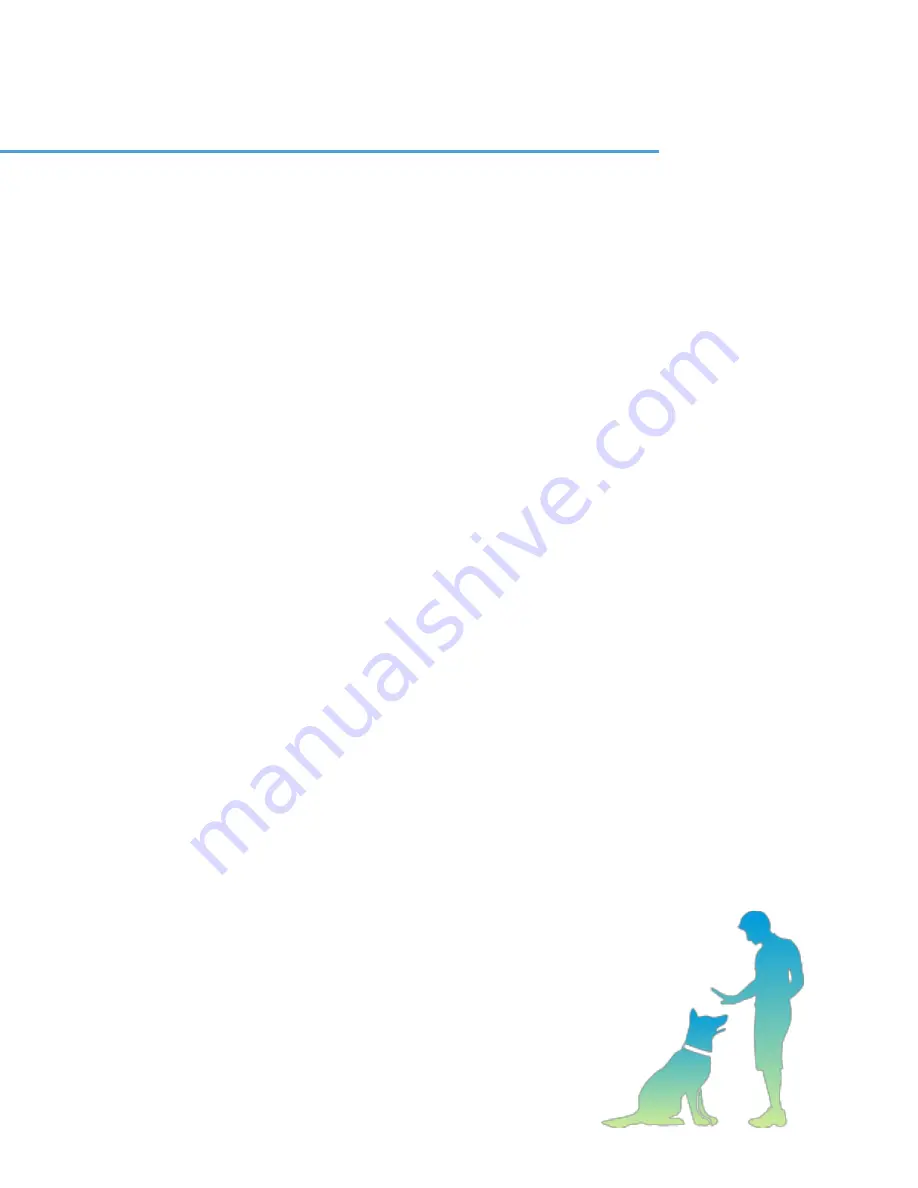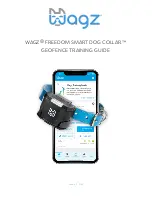
All pet containment systems require a pet owner to train their dog to stay within set boundaries.
Dogs are reward seekers, meaning that when trained properly, they will continue to repeat positively
reinforced behaviors.
Wagz has created a Training Mode that can be accessed from within the Wagz App. This Training
Mode provides not only training advice, but also leverages custom collar functions to better assist
with the training process.
Because no two dogs are alike, there is no “one size fits all” way to train a dog. The pet owner needs
to use a “what’s best for my specific dog” approach. The training outlined here is used by many
professional trainers. However, if you find that this approach does not work for your specific dog, try
researching other methods of training or ask your veterinarian for recommendations.
Here are a few tips to keep in mind:
Wagz Training Philosophy
P
OSITIVE REINFORCEMENT & REWARDS
•
It's important to reward and praise your pet for their good behavior and responsiveness to
commands. Treats, toys, and playtime are the most common rewards given during any
training exercise. When training your dog with our geofence containment system be sure to
have your rewards ready and have lots of them! The rewards don't need to be big, just a
little something to show your dog you're happy with what they're doing.
•
We have also found it extremely helpful to use a common, repetitive phrase when
rewarding your dog, such as “good girl/boy."
REDIRECTING WITH
CORRECTION
CUES
•
We believe in positive reinforcement training first. That being said, we know that with
stubborn behaviors or when it comes to safety, that correction cues can sometimes be
helpful. A tug on a leash, the word "No", or a humane correction from the Wagz Freedom
Collar can be very effective at getting your dog's attention and letting him know that he's
doing something undesirable or unsafe.
TRAINING FREQUENCY
•
Wagz has created a 4-phase training approach to introduce
your dog to the collar's corrections and the geofence boundaries.
•
Start with 3 brief training sessions a day, then you can drop down
to fewer sessions as training progresses. To ensure training is
effective and manageable, keep each training session to no
more than 10-15 minutes.
•
It will take multiple, repetitive training sessions a day over the
course of a few weeks until your dog understands the set
boundaries, where the boundaries are located and what it
means when they cross them.



























